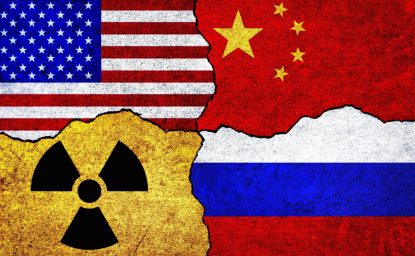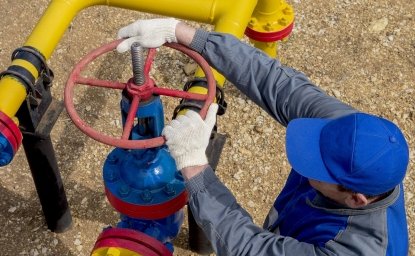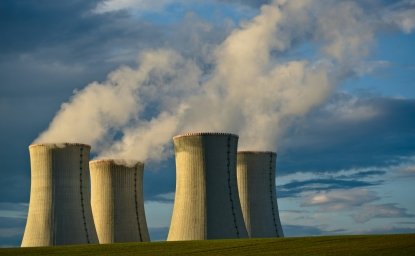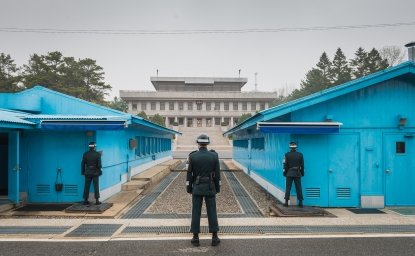Resolving the Dilemma of Nuclear Mistrust: From Foz do Iguacu to the Constitution of ABACC (1985-1991)



Nuclear relations between Argentina and Brazil immediately after re-democratization were not simple. Both countries still kept open the possibility of developing peaceful nuclear devices and had sensitive components of their respective programs outside the international safeguards regime, which presented a dilemma to be resolved in order to advance in other areas of the bilateral relationship.
The Argentine Government took the first step in this direction. With a view to the meeting of the Foreign Ministers of the democratic Governments of both countries, set for 20-21 May 1985, the Argentine Foreign Ministry elaborated a document suggesting that Brazil and Argentina negotiated a mutual safeguards mechanism and made a declaration renouncing peaceful nuclear explosions [Document 1]. In the previous year, Argentine authorities had entered into conversations with the Brazilian military government on an eventual declaration of renunciation to peaceful nuclear explosions – a proposal that had been presented by Brazil – but the Brazilian transition did not permit the negotiations to go forward.
This time, the Argentine Government had three objectives: (a) to reassure both parties that neither Argentina nor Brazil were about to produce nuclear explosives; (b) to provide guarantees of protection to the industrial secrets of each one and prevent restraints to the peaceful development of nuclear energy; and (c) to facilitate integrated development of Argentine and Brazilian nuclear industries. At the meeting of Ministers, Dante Caputo brought the Argentine ideas to his counterpart at Itamaraty, Olavo Setúbal, who was receptive to them and said he would make the necessary soundings in the different sectors of the Brazilian Government.
In the following months, two events showed the existence of concerns by both countries about the nuclear question. Between the end of August and the beginning of September, there was a strong internal debate in Brazil on the question of the bomb after the publication in the media of alleged declarations by the Brazilian Minister of the Army in favor of the development of that technology. The Argentine Ambassador in Brazil reacted to these news with preoccupation and requested a meeting with the Brazilian Foreign Minister to talk about the issue. [Document 2]. In order to reassure the Argentines about the peaceful intention of the Brazilian nuclear program, several sectors of the government declared their opposition to the bomb.
Next, on October 10 – one month before the presidential meeting between Raúl Alfonsín and José Sarney – the second episode took place. A Brazilian Air Force airplane flew over the Argentine uranium enrichment plant located at Pilcaniyeu twice [Document 3]. That plant, which was outside the international safeguards regime, had caused concern in the international community after the dramatic announcement of the Argentine Military Junta that they had mastered the uranium enrichment capacity, which for many sectors constituted evidence that the Argentine Government intended to build a bomb.
In this context the historic meeting between the democratic presidents was held in Foz do Iguaçu in November 1985, where for the first time the Argentine leader Raúl Alfonsín and his Brazilian counterpart, José Sarney, met. At the meeting, Argentina made its proposal of a system of bilateral safeguards in the nuclear field [Document 4]. The Brazilian Government, however, suggested a less ambitious step: the creation of a Working Group to be set up by the Foreign Ministries of both countries. The Brazilian position is contained in the Foz do Iguaçu Joint Declaration on Nuclear Policy.
Despite the progress, there were still signs that caused concern in both countries. In August 1986, the newspaper Folha de São Paulo published an article that revealed the existence of holes in Serra do Cachimbo, in the south of Pará, purportedly dug for a Brazilian nuclear test [Document 5]. With the objective of taking forward the efforts of the two countries to a higher level of transparency in the nuclear field, Presient Alfonsín suggested an unprecedented proposal: to invite President Sarney to visit the Pilcaniyeu plant, which Argentina knew had caused concern in Brazil. After the historic visit, in July 1987, both Presidents released the Declaration of Viedma.
It was now the Brazilian Government’s turn to deepen the cordiality that existed between the two countries in the nuclear field. Accordingly, prior to the Brazilian Government announcement to the world that it had obtained the uranium enrichment technology, President Sarney sent an emissary to Argentina to inform President Alfonsín about the Brazilian achievement. Ambassador Rubens Ricúpero received the mission of taking a letter from Sarney to Alfonsín, in a political gesture very much appreciated in Buenos Aires.
After that, President Sarney reciprocated Alfonsín’s gesture and invited him to visit the pilot plant at Aramar. This meeting took place in April 1998. On the occasion, both Presidents released the Declaration of Iperó, particularly relevant in one aspect: it elevated the status of the Joint Working Group by transforming it into a Permanent Committee, meeting every 120 days alternately in both countries to discuss all aspects relating to the nuclear issue. There was more than one joint visit to Argentine sensitive nuclear facilities, this time those linked to the reprocessing technology which Argentina had been developing at Ezeiza, in the province of Buenos Aires. The joint visit happened in November 1988 and culminated with the Declaration of Ezeiza.
After the presidential succession in both countries, there were initial fears that the nuclear understandings between Buenos Aires and Brasília would be undone. In both of them opposition parties had come to power that could change the course of the bilateral relation in the nuclear field. But what happened was the exact opposite. President Fernando Collor de Mello adopted three essential measures. The first was the appointment of José Luiz de Santana Carvalho to the presidency of CNEN. Carvalho would end up having a very important role in the dismantlement of the parallel structure that existed in the Brazilian nuclear program. The second and third took place in September 1990. With the objective of sending a message both for external audiences and internal sectors, President Collor de Mello sealed one of the holes at Serra do Cachimbo and afterwards made a speech at the United Nations renouncing peaceful nuclear explosions.
In November 1990 the historic presidential meeting between Menem and Collor de Mello took place at Foz do Iguaçu, which would deepen fundamentally the measures already adopted by Alfonsín and Sarney. The Presidents released the Common Nuclear Policy Declaration which established three essential elements: (1) the creation of the Common System of Account and Control (CSAC) that envisaged the system of reciprocal inspections; (2) the start of negotiations with the IAEA for the implementation of a safeguards agreement based on the CSAC, and (3) the adoption of the necessary initiatives toward full adherence to the Treaty of Tlatelolco.
With the aim of applying the CSAC, in July both countries signed at Guadalajara an agreement that contemplated the creation of the Brazilian-Argentine Agency of Account and Control (ABACC), a mechanism that resolved the dilemma of security in the field of nuclear energy that both nations had experienced since the 1960’s and permitted both of them to progress in an unprecedented physical integration, as was the case with the constitution of MERCOSUL.
Document 1: Cooperation in the field of peaceful uses of nuclear energy, May 13 1985.
Source: Private archive
This memo produced by the General Directorate of Nuclear Affairs and Disarmament of the Argentine Foreign Ministry presents the Argentine strategy vis-à-vis Brazil in nuclear matters, in preparation to the meeting of Foreign Ministers Dante Caputo and Olavo Setúbal in 20 and 21 May 1985 in Buenos Aires. The mutual control regime is presented as the most important point to be stressed by Argentina.
Document 2: S/N, request for a meeting with the Brazilian Foreign Minister, September 2 1985, secret.
Source: AMRECIC, Caja Brasil, h0005B
The Argentine Ambassador in Brazil, Rafael Vazquez, reports to Buenos Aires the declarations of the Brazilian Minister of the Army, General Leônidas Pires Gonçales, about his posture favorable to the building of a Brazilian atomic bomb. With the intention of underlining the Argentine concern, the Ambassador requests a meeting with Minister Olavo Setúbal.
Document 3: Overflight of a Brazilian military airplane at the Pilcaniyeu uranium enrichment plant, October 10 1985, secret.
Source: Private archive
The above mentioned note reports the overflight of a Brazilian military airplane near San Carlos de Bariloche (Rio Negro, Argentina), bound for Puerto Montt (Chile) and diverted from its original route to overfly the Pilcaniyeu facilities in two consecutive occasions. This event happened one month before the Foz do Iguaçu meeting between Presidents Alfonsín and Sarney.
Document 4: Foz do Iguaçu Joint Declaration, Argentine proposal. Subsidies for the meeting on nuclear issues with Argentine authorities, in preparation for the Presidential meeting at Foz do Iguaçu, November 1985. Confidential. Department of Energy and Mineral Resources of the Ministry of External Relations.
Source: AHMRE
The document contains subsidies for the talks between José Sarney and Raú Alfonsín in preparation for the joint declaration on the peaceful character of the nuclear programs and for the creation of a working group to promote cooperation between the two countries. Itamaraty recognizes that Argentina was more advanced in the nuclear field. The last two paragraphs suggest opposition to a possible Argentine proposal to create a mutual inspection system.
Document 5: Brazil prepares site for nuclear test. Folha de São Paulo, August 8 1986.
Document 6: Brazil-Argentine relations. Nuclear cooperation. Ambassador Rubens Ricúpero’s mission. September 4, 1987
Source: AHMRE
This cable reports on the mission of Ambassador Rubens Ricúpero to Buenos Aires with the objective of informing President Alfonsín of the Brazilian announcement about the mastery of uranium enrichment.
Disclaimers: This dossier is the result of ongoing research on the international history of Brazil’s nuclear program. The above historical narrative and selection of documents and oral history interviews might be updated as new and relevant evidence is uncovered.
Author

Nuclear Proliferation International History Project
The Nuclear Proliferation International History Project is a global network of individuals and institutions engaged in the study of international nuclear history through archival documents, oral history interviews, and other empirical sources. Read more


History and Public Policy Program
A leader in making key foreign policy records accessible and fostering informed scholarship, analysis, and discussion on international affairs, past and present. Read more




